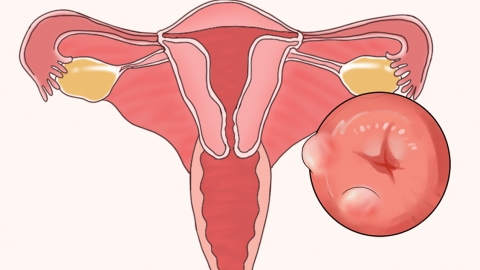What are the treatment methods for cervical cysts?
Generally, cervical cysts may be caused by physiological narrowing of the cervical gland ducts, squamous metaplasia, cervical injury, localized cervical infection, chronic cervicitis, and other factors. Treatment options include general therapy, physical therapy, and medication under a doctor's guidance. If discomfort occurs, prompt medical attention is recommended. Detailed explanations are as follows:

1. Physiological Narrowing of Cervical Gland Ducts
During cervical development, the cervical gland ducts may experience physiological narrowing, preventing the smooth discharge of secretions from the glands. These secretions may gradually accumulate and form cysts. Maintaining good personal hygiene and undergoing regular gynecological examinations are recommended to detect cervical abnormalities promptly.
2. Squamous Metaplasia
During physiological changes in the cervix, columnar epithelium may be replaced by squamous epithelium. During this process, the newly formed squamous epithelium may cover the cervical gland duct openings or extend into the ducts, blocking them and causing secretion retention and cyst formation. Maintaining a regular lifestyle, avoiding excessive fatigue, eating a balanced diet, and enhancing immunity are important for maintaining normal cervical physiology.
3. Cervical Injury
Cervical injuries commonly occur due to mechanical damage during childbirth, abortion, or surgery. During tissue repair after injury, newly formed tissue may compress the gland ducts, causing blockage and subsequent cyst formation. Associated symptoms may include increased vaginal discharge and abnormal odor. If the cyst is small and asymptomatic, regular follow-up may be sufficient. If the cyst is large or symptomatic, laser therapy can be used. This treatment works by using high-energy laser beams to carbonize the cyst tissue, forming a scab that falls off, thereby eliminating the cyst.
4. Localized Cervical Infection
Localized cervical infections are primarily caused by pathogens such as Chlamydia trachomatis or Neisseria gonorrhoeae. These pathogens invade cervical tissues, triggering inflammatory responses. Inflammation can cause adhesion and blockage of the gland duct openings, preventing secretion discharge and leading to cyst formation. Symptoms may also include abnormal vaginal discharge and external genital itching. Patients can use medications such as doxycycline tablets, azithromycin capsules, or minocycline hydrochloride tablets under medical guidance to alleviate symptoms.
5. Chronic Cervicitis
Chronic cervicitis often develops from incomplete treatment of acute cervicitis, with pathogens hiding within the cervical mucosa and forming chronic inflammation. Long-term inflammation can cause cervical gland duct narrowing or blockage, impairing secretion drainage and resulting in secretion retention and cyst formation. Symptoms may also include increased vaginal discharge, postcoital bleeding, and lumbosacral pain. Patients can take medications such as Ganthiot capsules, Fuke Qianjin tablets, or cefaclor capsules under medical supervision for treatment.
Maintaining good lifestyle and dietary habits and enhancing physical immunity can help prevent the occurrence and recurrence of cervical cysts. It is recommended to avoid excessive fatigue, maintain a positive mood, practice good personal hygiene, and undergo regular gynecological examinations.








